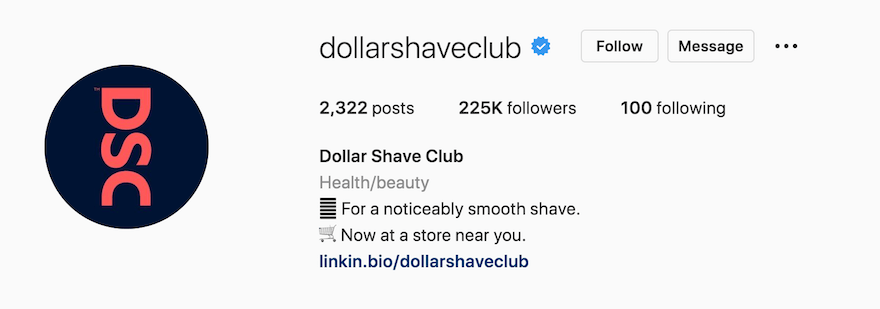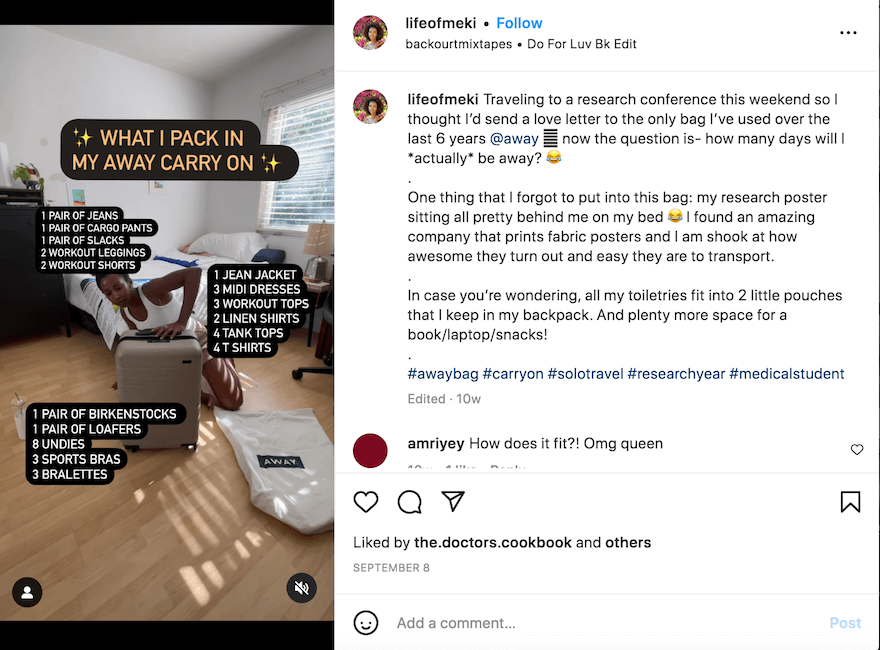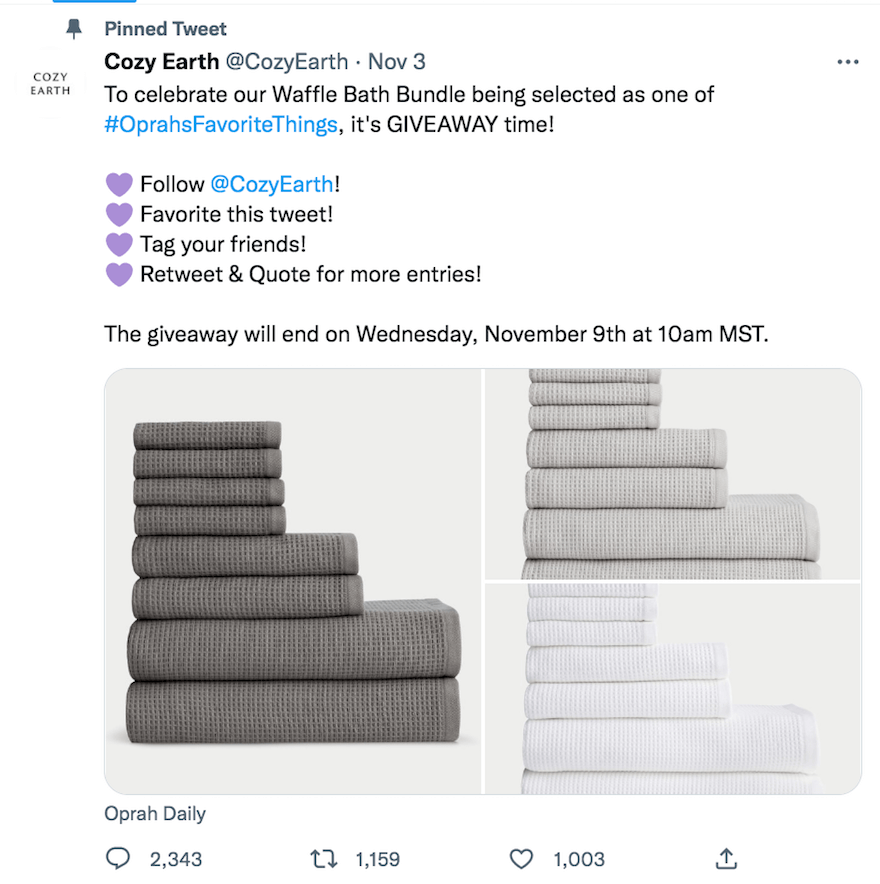Direct-to-Consumer Advertising: 5 Brands That Do It Right
If you click to purchase a product or service based on our independent recommendations and impartial reviews, we may receive a commission. Learn more
Traditionally, selling to the consumer has always involved a chain of third parties. Retailers, wholesalers – basically, a bunch of middlemen!
Now, though? Things are changing. More and more brands are going direct-to-consumer (D2C) – and opting to sell directly to their product or service’s end-user.
And why not? It cuts costs, facilitates a more seamless end-to-end experience for the customer, and – for the brand – puts control of their own customer interactions back into their own hands.
Yet direct to consumer advertising is a different ball game. And before you launch yourself into the direct to consumer world, you’ll need some inspiration from the brands who are doing it best.
Below, we define D2C advertising and the top strategies for success in it, including promoting your website and socials. Then, we’ll walk you through the top examples of the brands doing it best – and our D2C top tips!
What Is Direct-to-Consumer Advertising?
Direct-to-consumer (D2C) advertising is when a brand markets directly to its consumers.
Brands leveraging direct-to-consumer advertising eschew traditional forms of marketing – i.e. going through retailers or conventional distribution channels – and instead appeal straight to their target market.
Find Out More
Want to know more about what DTC is and how it works? Our guide on What Is Direct to Consumer Ecommerce dives deeper into this business model.
Direct-to-Consumer Advertising Strategies
Direct-to-consumer advertising is achieved through a wealth of different channels and strategies – so let’s explore what a few of these look like.
Social Media Marketing
Without a reliance on retailers and wholesalers pushing their products or services, D2C brands must maintain a strong social media presence.
So typically, D2C businesses are active on all the main social media platforms: including Facebook, Instagram, Twitter, Pinterest, and TikTok.
A D2C brand’s social efforts could include making money on social media directly – whether that’s through creating an Instagram shop, setting up a Facebook store, or selling on Twitter.
But they could also be less commercial, and instead aimed at building the brand through relevant content, audience interaction, and maintaining a consistent, relatable presence online.
D2C brands can also use social media to encourage and promote UGC (user-generated content) from their followers. UGC is, essentially, free marketing – and because a brand hasn’t paid for the privilege, the social proof it provides is arguably even more powerful than that of influencer marketing. (Which we’ll get to in a sec!)
Personalized Email Marketing
As a D2C brand, it’s not only your social media following you have to aim to grow, but your email list, too. Here’s where email marketing comes in.
Regularly popping into your customers’ inboxes with engaging, entertaining (and, most importantly, relevant) content has a number of benefits:
- It keeps your brand top of mind
- It can invite conversation, spark debate, and incite interaction with your brand
- It encourages them to visit your site – and potentially make a purchase
- It establishes your brand’s unique voice and personality in a crowded space
Along with all the inevitable brand-building elements, personalized email marketing is a key tool for D2C businesses looking to drive sales and generate leads.
You can target shoppers with abandoned cart emails, and re-engage them with tailored deals and discounts. Via a loyalty scheme, you’ll also be able to reward your most active and high-volume customers.
Influencer Marketing
With influencer marketing’s continued, inexorable rise – the market, worth $1.7 billion in 2016, is worth around $15 billion now – D2C brands have to tap in.
By paying to harness the existing reputation of an influencer (basically, someone with a lot of followers – and serious clout with your audience), you can place your D2C brand’s offering in front of a huge, engaged, and relevant slice of your target market.
Plus, there’s now a burgeoning submarket of influencers – dubbed “micro influencers” – which is making this form of D2C marketing ever-more affordable. These personalities may lack the colossal follower counts of their “macro” counterparts. But they also tend to specialize in a more specific niche – which can make them a highly effective, super trustworthy addition to your next D2C advertising campaign.
5 Direct-to-Consumer Brand Examples
Ready to see what top-notch direct-to-consumer advertising looks like in practice? Here are five brands killing it in the direct-to-consumer game. Get inspired!
#1: Glossier
Founded in 2014, Glossier is a D2C skincare and makeup brand based in New York.
Without wholesalers or retailers to rely on, Glossier has adopted a range of D2C advertising strategies.
For one, it’s nailing its content marketing. Glossier has a whole subsite, Into the Gloss, dedicated to engaging its customers with articles, makeup tutorials, and product reviews – plus enough interviews, articles, and advice to keep any beauty enthusiast entertained for hours.

On top of building the brand and engaging Glossier’s audience, Into the Gloss also serves as a crucial entrypoint into the business’ email marketing system. After perusing its content, readers are encouraged to sign up for event invites, more info, and exclusive details about product launches.

#2: Dollar Shave Club
Founded in 2011, California-based Dollar Shave Club is the perfect example of a D2C brand that’s thrived by carving out its own unique identity.
In Dollar Shave Club’s case, that’s been by cultivating a down-to-earth, relatable, “blokey” brand persona. Fully aware that its primary audience is men, Dollar Shave Club leans into a cheeky, no-nonsense tone of voice that isn’t afraid to call a spade a spade, a shave a shave – or pull any punches.
Its social media presence is full of examples. One asks, tongue-in-cheek, if “you really want balls on your face” – another claims its shaver is “not slippery when wet.”

But Dollar Shave Club’s quirky content isn’t just for subverting expectations and tradition, and establishing it as a modern voice in the industry. It’s also for selling – and readers of the D2C brand’s posts are encouraged, in the captions, to learn more about (and ideally, purchase) its products in the bio.

#3: Away
Founded in 2015, New York City-based travel accessories business Away has enjoyed a meteoric rise – and is now one of the highest-funded female-backed startups.
Led by founders Steph Korey and Jen Rubio, Away leans into the D2C model – in fact, Korey attributed its success to cutting out the middleman when she said:
“We dug into the supply chain and realized all those $1,000 suitcases were wildly marked up because of how they were distributed, and decided we’d make the best luggage in the world based on travelers’ true experiences, and sell it exclusively direct to consumer.”
- Quoted in Core dna
So which D2C advertising strategies did Away employ to get to the top?
For one, its founders created a narrative around the business that their audience resonated with – and related to. They framed Away not as a luggage company, but as a travel company. And, in the process, made it a more exciting sell to their potential customers.
Away also leveraged the power of its audience’s passion for its products. As well as leaning heavily into influencer marketing, the D2C brand regularly shares and promotes UGC across its social media platforms.

#4: Cozy Earth
Luxury bedding and loungewear brand Cozy Earth is a D2C brand that also looks frequently to influencers to expand its reach and presence – so much so, in fact, that it has a section of its website dedicated to recruiting influencers. (Or as Cozy Earth dubs them, “creative minds and talented individuals.”)

As for social media, Cozy Earth runs regular competitions: offering its audience the chance to win products, in exchange for a follow of its account and a favorite of its tweet.
Cozy Earth is also quick to shout about its appearances in the media. In the screenshot of the D2C brand’s recent Twitter competition below, it’s piggybacking on its product, the Waffle Bath Bundle, being selected as one of Oprah’s “favorite things.”

#5: Casper
D2C mattress brand Casper is one of the success stories of the last decade. Take one look at its marketing – particularly the high-quality content it’s putting out – and it’s not hard to see why.
Casper’s website features a detailed blog with a wide range of diverse content. Between tips on how to break in a mattress to how to stop falling asleep at work, Casper’s articles strike the right balance of engaging, relevant, humorous, and informative – all while remaining relevant to its audience and suite of sleep products.

Casper’s YouTube channel contains similar examples of direct to consumer advertising – albeit a more subtle form – done well. The “Casper Sleep Channel” contains relaxing music, sounds, and “truly boring” fairy tales designed to help its listeners get a better sleep – exactly what its mattresses do.
While unlikely to attract too many fresh leads, this savvy form of content marketing does help Casper build an engaged, tight-knit community of customers – and engender the kind of brand loyalty that has them coming back for more.

Direct-to-Consumer Advertising Top Tips
Before you go, let’s round up our top tips – from all five brands we’ve profiled above – to make sure you smash your next direct to consumer advertising campaign.
- Use content marketing to build a community: just like Glossier’s “Into the Gloss” or the Casper Sleep Channel, use content – be it how-to guides, videos, or images – to foster customer loyalty and engagement.
- Run social media competitions: like Cozy Earth on Twitter, offer your customers the chance to win products if they follow your brand and share your posts. You can incorporate any recent appearances in the public eye, too!
- Locate influencers that fit your brand: be they macro or micro (or even nano), influencers are an excellent way of promoting your brand. And for a free (but often just as effective) alternative, share any UGC your audience produces of their own volition, as Away often does. It’s extremely convincing evidence of your brand’s authenticity and attractiveness!
- Develop a unique brand identity: Just as Dollar Shave Club has built its business on down-to-earth, blokey relatability, cultivating a distinct tone of voice will help you appeal to your target audience – and build a loyal following.
Summary
Direct to consumer advertising comes with its risks. You’re breaking away from traditional distribution channels, after all – and going it alone.
But the D2C approach also offers big rewards. By speaking and selling to your audience directly, you can build a deeper, more enduring connection with them.
You can reward their loyalty and engagement through social media. Reach out to them through the faces of their favorite influencers. And create content not only to sell to them – but to deliver lasting value that’ll put a smile on their face.

Leave a comment